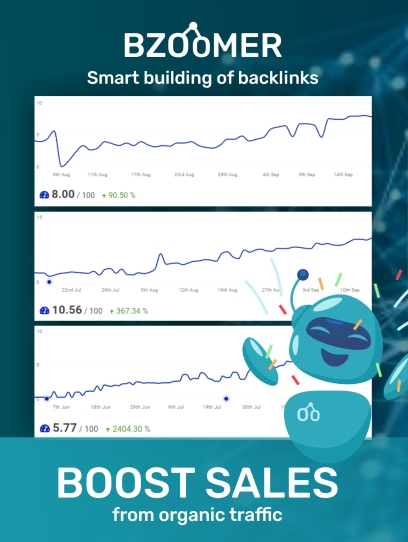In today’s competitive business landscape, speed and flexibility often matter more than ever. Whether you’re a growing startup or an established small business seeking faster expansion, the right financing can make a big difference. One option that’s gaining traction among entrepreneurs is the business cash advance.
In this article we’ll explore what a business cash advance is, how it works, its advantages and disadvantages, when it’s appropriate, how it compares to traditional loans, and how to decide if it’s right for your company. We’ll also reference resources like 123 Funding and general best practices to help guide your decision-making.
What is a Business Cash Advance?
A business cash advance is a financing mechanism where a lender provides capital to a business upfront in exchange for a portion of the business’s future revenue or credit card sales. Unlike a conventional bank loan with fixed monthly payments and interest, a business cash advance often uses a percentage of future daily or weekly sales for repayment.
Key features typically include:
-
Rapid funding: Businesses can receive capital in days instead of weeks.
-
Flexible repayment: Repayment is tied to revenue flow rather than fixed amounts.
-
Less emphasis on credit history: The lender focuses more on business cash flow rather than just the owner’s credit score.
-
Higher cost relative to traditional financing: Because the risk is higher and the repayment structure is different, the cost can be comparatively higher.
For many businesses, especially those with unpredictable cash flow or seasonal peaks, a business cash advance provides the agility needed to seize growth opportunities or manage unexpected expenses.
How Does the Process Work?
Here’s a typical flow for obtaining a business cash advance:
-
Application – The business fills out a relatively simple form. Lenders may request recent bank statements and details of monthly sales.
-
Underwriting – Instead of focusing exclusively on credit score, the lender evaluates your revenue patterns, industry, and risk.
-
Offer – The lender presents a lump-sum advance and an agreed-upon percentage of future sales or card transactions the business will pay until the advance is repaid.
-
Funding – Once terms are accepted and contracts signed, the funds are deposited—often within a very short timeframe.
-
Repayment – A fixed percentage of daily/weekly sales or credit card receipts is automatically directed to the lender until the advance (plus the agreed cost) is fully repaid. Because repayments fluctuate with revenue, this method offers more flexibility when business slows.
Because of this structure, a business cash advance can act like an alternative to a traditional loan — but with trade-offs.
Why Choose a Business Cash Advance for Growth?
Using a business cash advance can help your company accelerate growth in several meaningful ways:
Speed and Flexibility
When an opportunity arises — for instance, a chance to purchase bulk inventory at a discount, launch a marketing campaign, open a new location, or cover an unexpected slowdown — waiting for a bank loan can cost you. A business cash advance lets you act quickly.
Revenue-Sensitive Repayment
Since repayments scale with your actual sales, a business cash advance can be less burdensome during slower periods. When business is strong, you repay faster; when it’s slow, repayment amounts drop accordingly. This can help maintain cash flow and prevent over-leverage.
Minimal Collateral Requirements
Many business cash advance providers do not require tangible collateral or perfect credit. Instead, they rely on revenue signals. This makes the product accessible to businesses that might be excluded from traditional loans.
Growth Opportunities
With ready access to capital, you can invest in elements that drive growth: equipment upgrades, hiring key staff, expanding into new markets, or ramping up marketing. A business cash advance gives you flexibility to invest when you need to.
When a Business Cash Advance Makes Sense — and When It Doesn’t
Situations Where It’s a Good Fit
-
You have reliable, predictable sales and need funding quickly to act on time-sensitive opportunities.
-
You face seasonal fluctuations and need financing that flexes with your business rhythm.
-
You’ve been declined by banks or want to avoid heavy collateral requirements.
-
You want simplicity and minimal paperwork.
Situations Where Caution Is Required
-
Your sales are highly inconsistent or your cash flow is very weak. The repayment percentage could take a large bite out of your revenue when things go well.
-
You need long-term, low-cost financing. Because business cash advances tend to have higher cost structures, they may not be the most economical for long-term strategic funding.
-
You have alternative financing options with lower interest or cost. Always compare actual cost of capital.
Comparing Business Cash Advance vs. Traditional Business Loan
| Feature | Business Cash Advance | Traditional Business Loan |
|---|---|---|
| Speed of funding | Typically very fast (days) | Often several weeks or longer |
| Repayment structure | Percentage of future sales (flexible) | Fixed monthly payments (rigid) |
| Credit & collateral requirements | Less strict, revenue-driven | Often stricter, credit score + collateral required |
| Cost of capital | Generally higher cost | Generally lower cost over time |
| Cash flow impact | Repayments scale with revenue | Repayments fixed, regardless of revenue fluctuations |
When growth opportunities are short-term or urgent, a business cash advance can be justified. But for long-term financing needs, traditional loans may be more cost-efficient.
How to Qualify and Apply for a Business Cash Advance
Here are steps you can follow to prepare for applying for a business cash advance:
-
Assess your sales history – Gather 3-6 months (or more) of bank statements, credit card statements, or POS data to demonstrate sales volume.
-
Review your cash flow patterns – Understanding peaks and troughs will help you choose terms that you can afford.
-
Shop multiple providers – Even among business cash advance offers, cost structures vary significantly. Look at factoring or hold-back percentages.
-
Evaluate terms carefully – Understand exactly how much you’ll repay, how the percentage is calculated, if there are prepayment options, and what happens if sales slow.
-
Consider impact on growth – Use conservative estimates of future revenue to gauge how repayment will affect your margins.
-
Use the funds purposefully – A business cash advance is most effective when deployed into growth-driving uses (e.g., inventory purchase, marketing, new location) rather than just bridging routine operational gaps.
How the Provider at 123 Funding Could Fit In
If you’re considering options, a provider like 123 Funding can be one route. While every provider’s details vary, a firm like 123 Funding typically offers quick access to capital and is focused on helping businesses get growth funding fast. You’ll want to check:
-
Their approval criteria (sales history required, industry focus)
-
The cost of capital (percentage or hold-back terms)
-
The speed of funding (how quickly funds can arrive)
-
Repayment terms (daily/weekly percentage, automatic debit, seasonality impact)
-
Transparency (clear contract, no hidden fees)
By doing your due diligence, you can select a partner aligned with your business needs.
Best Practices for Using a Business Cash Advance for Growth
-
Use the capital for investment – Deploy funds into activities that yield growth or cost savings (e.g., buying discounted inventory, upgrading equipment, targeted marketing) rather than covering routine expenses.
-
Monitor daily/weekly repayments – Because repayments fluctuate, you should monitor cash flow closely to ensure the repayment factor doesn’t surprise you.
-
Track ROI of funded activity – If you buy inventory or ramp up marketing using the cash advance, measure what returns you get — this helps justify and plan future financing.
-
Plan exit or payoff strategy – If sales accelerate, you might pay off the cash advance early if allowed; if sales dip, have contingency for slower repayment.
-
Maintain strong sales data – Since approval and cost depend on revenue, keep your books solid and statements current for future funding rounds.
Common Misconceptions and FAQs
Is a business cash advance “just a loan”?
Not strictly. While it functions similarly, a business cash advance is technically not a loan in many jurisdictions. Instead, it is a purchase of future receivables or future sales. This difference influences the structure and regulation.
Does poor credit disqualify you?
Often you’ll find more flexibility compared to bank loans, since the provider emphasizes your current revenue over just credit score. But that doesn’t mean there’s no evaluation — you must still demonstrate sales.
Are the costs hidden?
You must scrutinize the contract: what percentage of future sales, what hold-back, whether daily or weekly deduction, what the effective annual cost is. Some business owners under-estimate the repayment rate’s impact.
Can I use the funds for anything?
Yes, generally you can use them for growth, working capital, inventory, marketing, or covering a temporary cash flow gap. Good practice is to use them for strategic growth to maximise ROI.
Final Thoughts
For businesses that need quick, flexible capital to seize growth opportunities, a business cash advance can be a powerful tool. It delivers speed, flexibility and access without the stringent requirements of traditional bank loans. However, with that flexibility comes higher cost and the need for careful planning.
If your business is in a position where you have predictable revenue, want to move quickly on growth plans, and understand the repayment implications, then leveraging a business cash advance can help your company grow faster. Always ensure you compare offers, understand terms, track impact, and align the funding with strategic goals rather than just daily survival.
Remember: capital is only as good as how you deploy it. A business cash advance is not a fix-all — it’s a tool. Use it wisely, and it may help your company accelerate to the next level.


